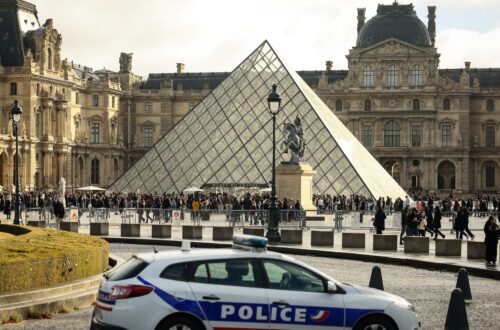Taylor Swift is back in dazzling form, breaking records not just in music but in film. Her new album and companion cinematic event, The Life of a Showgirl, has rocked the box office and streaming charts alike—reinforcing the unmatched connection she maintains with her audience. The album’s headline numbers are already staggering: first-week sales, streaming counts, and concert ticket demand are all hitting new peaks. Swift’s promotional strategy, which treats the album as a theatrical spectacle as much as a collection of songs, has elevated it beyond a simple release—it’s a multimedia moment, a cultural flashpoint.
The title The Life of a Showgirl is rich with meaning, merging ideas of spectacle, performance, and living behind the scenes. In one sense it evokes the glamour and spotlight of a performer, someone whose life is laid bare for audiences. But it also gestures toward what lies offstage—the private exhaustion, the hidden vulnerabilities, the toll behind the curated appearance. Swift appears to be underscoring that the show is always on, and yet the person behind it is still being shaped by every night’s performance. In the film version, that contrast becomes literal: scenes of arenas and roaring crowds are intercut with moments of solitude, reflection, and the unseen emotional labor of touring. The movie doesn’t just document a concert; it frames the showgirl’s world as both driven by external applause and haunted by internal consequence.
What makes this era different from past ones is scale. Swift isn’t simply topping charts—she’s reconfiguring what an album rollout can be. The theatrical premiere of the film was sold out in many cities, turning screenings into shared events rather than passive viewings. Audiences adjust their schedules to match her timeline. Her collaborators—longtime producers, innovators in visual media, immersive set designers—are treated as equals in conceiving the aesthetic universe around the music. It’s a reminder that Swift has never been only a singer-songwriter: she wants to inhabit her own mythology, and The Life of a Showgirl gives her a new set of tools to do it.
Record-wise, the album entered streaming platforms at an unprecedented pace. On Day One it shattered prior marks for plays in a 24-hour period, and in many countries it vaulted to the top of charts within hours. It also rekindled conversation about the emotional core that makes her music resonate. Fans and critics alike are marveling at how, after 12 albums and decades in the spotlight, she still takes risks—chromatic shifts in tone, direct emotional exposure, genre detours—all while capturing millions of hearts. The film’s box office draw is equally noteworthy: early projections suggest it may rank among the highest-grossing concert films ever in its opening weekend. Swift has turned what used to be a supplementary visual companion into a core revenue and cultural pillar.
The synergy between album and film mirrors the album’s themes: presence and absence, the public and the private, how the performance is both mask and revelation. In many ways, the showgirl is a metaphor for modern stardom—displayed, dissected, adored, and criticized. Swift’s choice to center that identity in both music and cinema signals a maturity: she’s no longer simply performing hits, she’s interrogating the cost of performance.
Already the era has sparked a ripple effect across the industry. Other artists, studio executives, and marketers are reconsidering how to launch albums, how to design visual narratives, how to merge film premieres with streaming events. But Swift’s success is not just about scale—it’s about courage. She is staking her legacy not on nostalgia, but on evolving forward. The Life of a Showgirl is not a nostalgic look back, but a bold step into a new chapter—a story told in lights and shadows. In doing so, Taylor Swift reminds us that art can still surprise.




